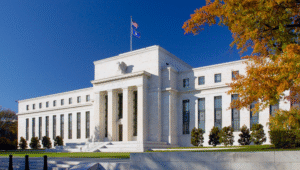$BTC $ETH $DXY
#Bitcoin #Crypto #MonetaryPolicy #Economy #FinancialMarkets #Investing #BTC100K #Blockchain #Dollar #Inflation #DigitalAssets #JackMallers
Bitcoin’s periodic rise above the $100,000 threshold is no longer being seen as a far-fetched event. Instead, it is quickly becoming a recurring phenomenon in financial markets indicative of the growing maturity and relevance of cryptocurrency. With each surge, Bitcoin demonstrates its ability to absorb massive capital inflows. However, its subsequent pullbacks just below the six-figure mark highlight how the market is still exploring its limits, navigating volatility, and testing investor conviction. The broader implications of Bitcoin’s performance stretch beyond market movement; it is increasingly being tied to major shifts in U.S. monetary policy. Jack Mallers, a prominent figure in the crypto space, has termed the current landscape as the “biggest economic shift since Nixon.” This bold claim underscores an impending recalibration of how monetary systems operate globally.
The emphasis on Bitcoin’s milestones is intertwined with U.S. monetary trends, particularly as policymakers discuss significant adjustments in the next 12 to 36 months. With inflation concerns still looming and the Federal Reserve maintaining a hawkish stance, the U.S. dollar index ($DXY) remains a pivotal player. However, Bitcoin and other digital assets, such as Ethereum ($ETH), are gaining traction as alternative stores of value. Investors are increasingly weighing these assets against traditional options like gold or government bonds, especially as central banks grapple with the trade-off between stimulus measures and inflationary pressures. The potential shift in monetary policy could accelerate this trend and reframe the narrative around cryptocurrencies as not just speculative instruments, but also as important hedges against inflation and currency devaluation.
Jack Mallers’ statements hint at a seismic change in monetary policy, raising questions about the long-term role of the U.S. dollar as the world’s reserve currency. Historical comparisons to Nixon’s removal of the gold standard in 1971 underline the gravity of the situation. Back then, the shift marked a significant decoupling of the dollar’s value from physical gold, catalyzing decades of fiat-dominated financial systems. Now, as Mallers predicts, digital assets like Bitcoin may be opening yet another chapter in monetary evolution. Proponents argue that decentralized, fixed-supply currencies offer a compelling alternative to traditional systems plagued by inflation risks and oversupply. Should Mallers’ forecast materialize, cryptocurrencies could occupy an even more prominent role in both institutional portfolios and everyday transactions.
Market participants are already responding to these signals, as evidenced by Bitcoin’s resilience near the $100K level. Such resilience fosters institutional confidence and sparks a broader conversation about Bitcoin’s place in future economic models. Meanwhile, volatility remains a core trait of the crypto market, underscoring both its risks and opportunities. For retail investors, the ongoing shifts suggest the need for diversified strategies that hedge against traditional macroeconomic variables, such as inflation trends and dollar strength. These dynamics further solidify Bitcoin’s role as a bellwether for the intersection of financial technology and global monetary policy, opening doors for new discussions about decentralization, international trade, and currency reform in an increasingly digitized world.











Comments are closed.